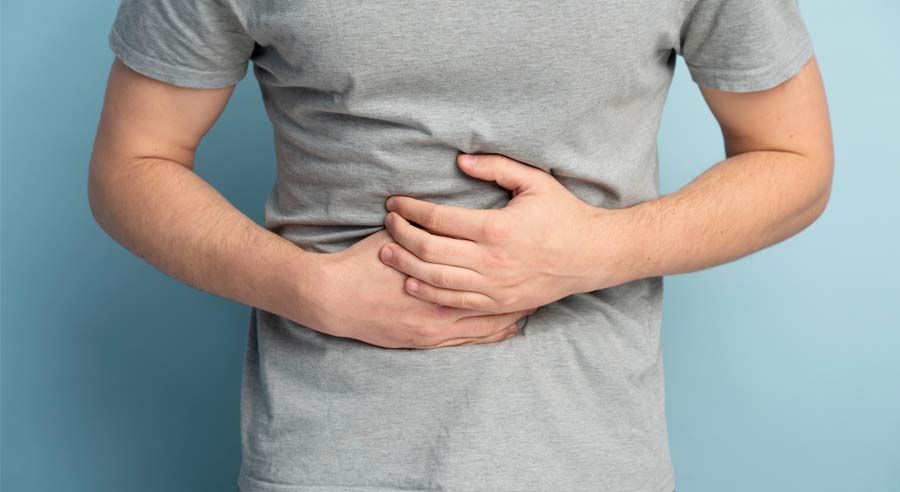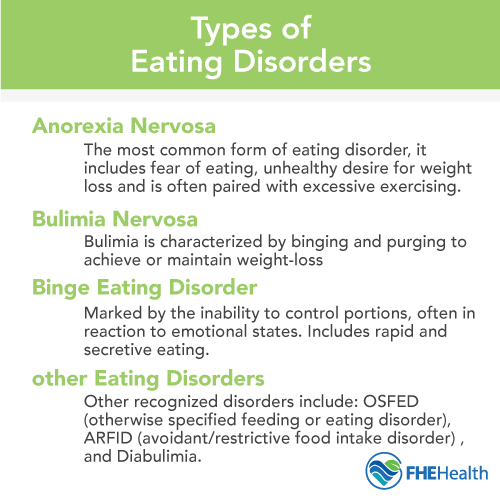Our Eating Disorder Recovery Statements
Wiki Article
Everything about Eating Disorder Recovery
Table of ContentsEating Disorder Recovery Can Be Fun For Anyone5 Simple Techniques For Eating Disorder RecoveryThe Of Eating Disorder RecoveryIndicators on Eating Disorder Recovery You Should KnowRumored Buzz on Eating Disorder Recovery

ARFID is often taken into consideration a severe kind of particular consuming. Some youngsters are finicky eaters and might be identified with ARFID due to the fact that they don't consume adequate calories to establish and grow. Adults can be identified with ARFID too, and along with not creating literally, they may have difficulty with keeping fundamental physical features.
Rumination disorder is an eating disorder that entails frequently spitting up food. A person with rumination problem doesn't show up to do this purposefully.
Some Known Details About Eating Disorder Recovery
Individuals who are identified with rumination eating disorder are frequently taught to replace the regurgitation with deep breathing strategies. Orthorexia is a reasonably brand-new term that has actually not yet been commonly accepted. Orthorexia nervosa is not yet a recognized eating problem medical diagnosis. Nevertheless, this does not imply that orthorexia is not harmful.Orthorexia is specified as an obsession with consuming healthy food and also preventing harmful food. A person with orthorexia is most likely to experience some impairments in their life due to their fixation with healthy consuming.
Like orthorexia, diabulimia is not yet a formally recognized eating disorder. Comprehending specifically what diabulimia is can aid identify people who are having a hard time with this problem and may likewise be at danger of creating other consuming problems.
Eating Disorder Recovery Fundamentals Explained
Other Specified Feeding or Eating Disorder, more commonly described as OSFED, was formerly called Eating Disorder Not Otherwise Defined (EDNOS). An OSFED eating problem might not satisfy the diagnostic criteria for various other eating conditions however is nonetheless serious and possibly life-threatening. In most cases, OSFED describes a problem that has the general qualities of anorexia or bulimia but does not meet the complete diagnostic criteria for either of these problems.An individual with an OSFED is just as likely to have significant medical effects as individuals who completely fit an eating disorder medical diagnosis. Someone that has an OSFED might be equally as likely to pass away as a result of disordered consuming as anybody else with an eating disorder. Eating disorders might be brought on by co-occurring mental wellness disorders as well as can create physical problems that can be life-threatening.
Identifying the very early warning signs of consuming problems can make a remarkable distinction in the long-term health results created by the disorder. Indicators and signs and symptoms of eating conditions can be usually divided into 2 sub-categories: behavioral (and psychological) signs and also physical signs. Usual emotional as well as behavior signs of an eating condition may not constantly be quickly identifiable.
Getting The Eating Disorder Recovery To Work

In situations where typical behavioral as well as psychological signs and symptoms are incapable to be observed, a doctor may identify an eating disorder only based upon physical signs (eating disorder recovery). Some usual physical symptoms of an eating problem include: Visible fluctuations in weight (both gains as well as losses)Stomach aches, Constipation, Indigestion, Menstrual abnormalities, consisting of loss of periods or missed periods, Difficulty focusing or receiving attention, Wooziness or fainting, specifically after standing, Resting problems, Cuts and calluses on fingers, Dental issues like enamel disintegration, find here cavities and tooth sensitivity, Dry skin, hair as well as nails Like various other mental health and wellness problems, eating problems are brought on by a combination of ecological, hereditary and social factors.
An inefficient hormonal reaction to tension might suggest a susceptibility to establishing an eating problem. Social scenarios linked with sporting activities, modeling or various other professions focusing on body image as well as weight control could affect the growth of eating disorders.
The Of Eating Disorder Recovery
Indication differ from individual to individual, yet some variables are likely to influence an individual's danger of developing an eating problem (eating disorder recovery). Some organic danger elements that are relevant to individuals with anorexia nervosa, bulimia nervosa or binge eating disorder consist of: Having a member of the family with an eating disorder, Having a relative with an additional mental wellness disorder Perfectionism, Body photo discontentment, Background of an stress and anxiety problemInflexible reasoning Weight preconception, Background of diet programs, Being teased or bullied, Limited social media networks, History of trauma Just like other psychological health disorders, consuming disorders and addictions frequently co-occur.In addition, up to 35 percent of people with material use conditions also had an eating condition.
Report this wiki page